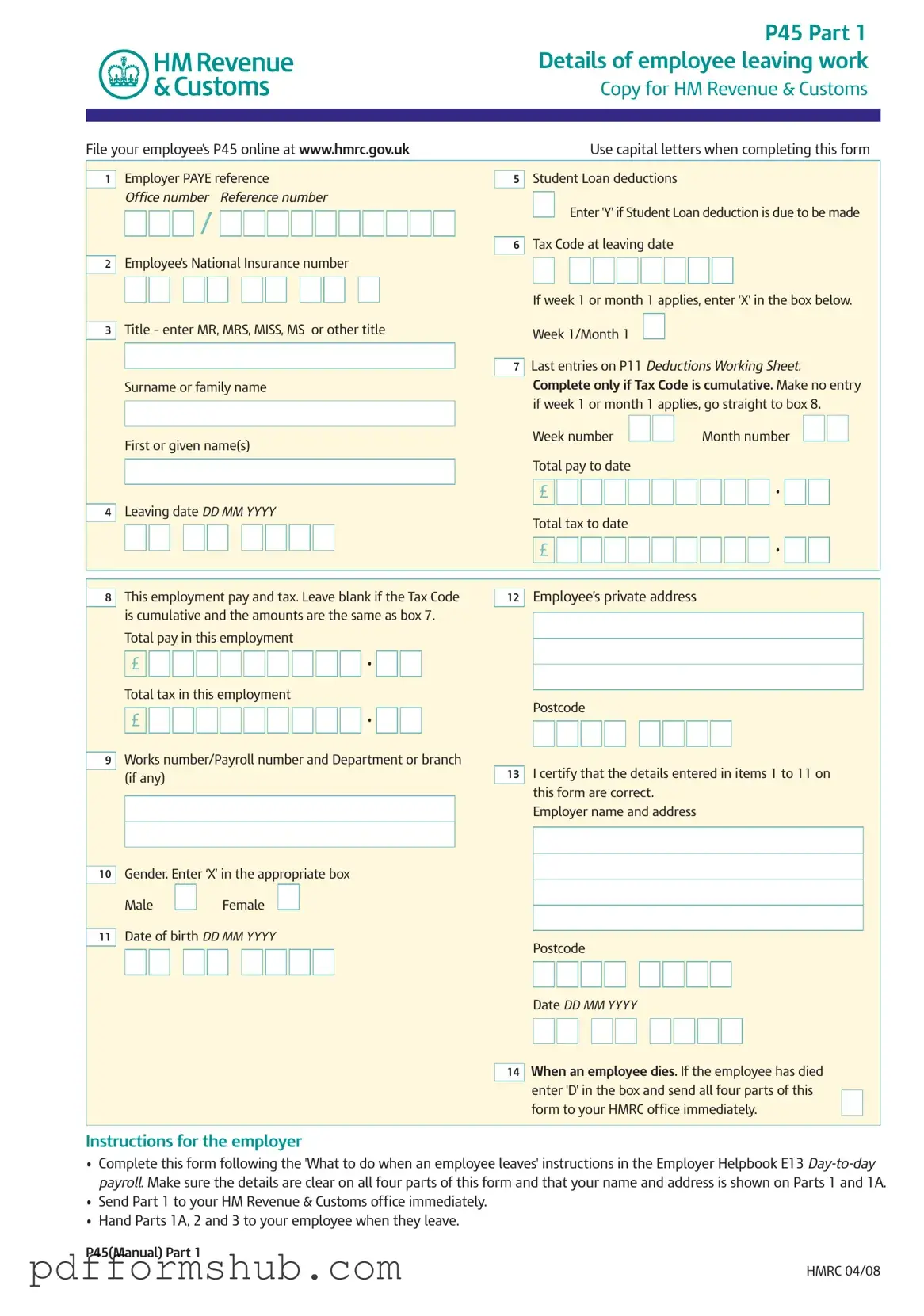The P45 form is a crucial document that plays a significant role in the process of an employee leaving a job in the United Kingdom. This form is divided into three parts, each serving a specific purpose for the employee, the employer, and HM Revenue & Customs (HMRC). When an employee departs, the employer must complete the P45 to provide essential information such as the employee's tax code, National Insurance number, and total pay and tax deductions to date. This information is vital for ensuring that the employee's tax situation is accurately managed, especially when they begin a new job or apply for benefits. Part 1 of the P45 is submitted to HMRC, while Parts 1A, 2, and 3 are given to the employee and their new employer. The form also includes specific instructions for handling student loan deductions and provides guidance on what to do if the employee is transitioning to self-employment or claiming benefits. Understanding the details and implications of the P45 form is essential for both employers and employees to navigate the complexities of employment transitions and tax responsibilities.
